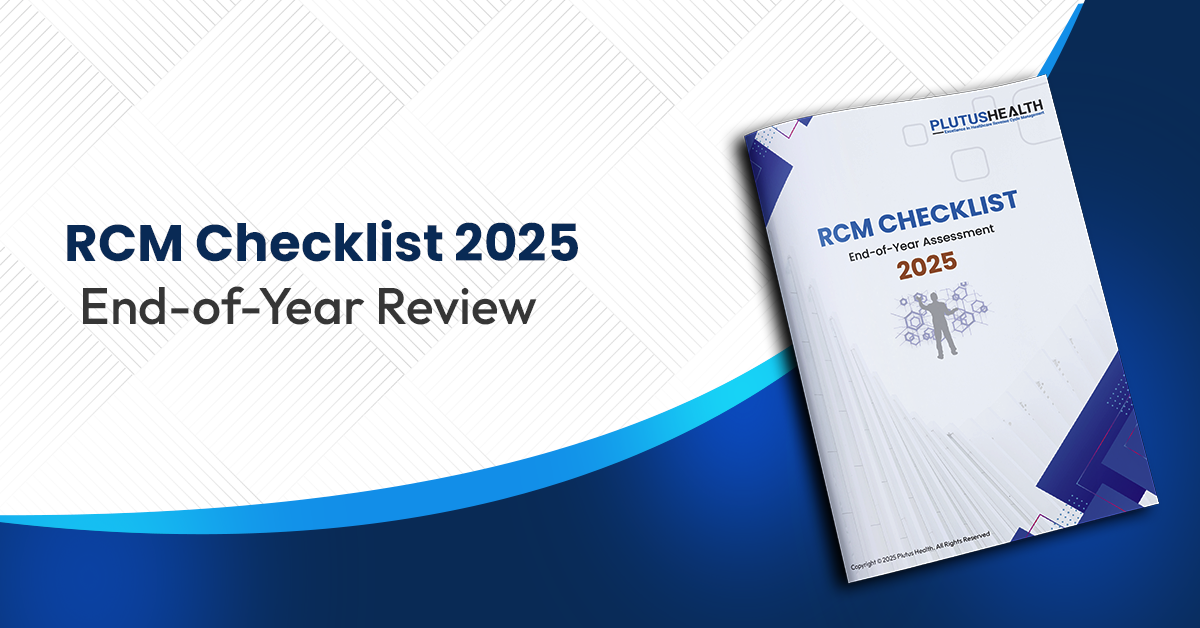Top 4 Ways Fintech is Enhancing Healthcare
Medical patients' average single deductible almost doubled between 2010 and 2020. Trends predict that the next decade will continue this rise in patient financial responsibility. Confusing bills and inflexible payment options add to this problem. As such, patients struggle to pay for services, and practices frequently must resort to charity write-offs.
Financial technology (fintech) makes bills easier to pay and more understandable for patients. Fintech companies use artificial intelligence and machine learning to boost efficiency and fill knowledge holes. As a result, medical practices are adopting this technology at record rates. Usage rose from 16% in 2015 to 64% in 2019.
Here are the top four ways fintech is enhancing healthcare.
Offers Flexible Payment Plans
Different patients have unique payment abilities. Because of this, adopting a one-size solution is ineffective. Patients say they prefer creative payment plans that offer more flexibility. Fintech provides a personalized payment plan that morphs to fit a patient’s needs. Doing so prompts quicker and more reliable payments.
Additionally, fintech excels at making the payment process easy. Consumers can link up the credit card of their choice to the application or directly wire from a bank account. Also, mobile payment applications (like Applepay, Amazonpay etc.) are simple for many people to understand and use. The instant nature of this feature makes payments far quicker than previously.
Gives Crucial Payment Information
Healthcare bills have had a unique lack of price transparency. Physicians frequently administer services before a patient knows how much they will cost. While politicians attempt to mandate transparency, patients still struggle with price clarity. Thankfully, fintech offers solutions with easier lending and financing options. Giving this information upfront manages a patient’s expectations and eases tension.
A 2020 study shows that 10% of medical consumers refuse to pay their bills if they fail to understand the administrative process. Confusing healthcare terminology paired with confusing insurance terminology makes many bills incomprehensible. Fintech breaks down this jargon and sections parts off to clearly distinguish charges.
Additionally, the patients with the highest bills frequently see multiple health professionals. As such, their financial paperwork is a mess that is a nightmare to untangle. Fintech organizes all of these different health professionals into a neat, accessible list.
Rebuilds The Patient and Provider Relationship
With the increased burden medical practices must place on their consumers, many providers find their patient relationships strained. Providing manageable payment options helps to temper consumer reactions to bills. Fintech achieves this goal by offering long-term, low-interest financing. This feature disperses the tension of a high price tag over months or years.
Healthcare providers fail to collect a significant portion of their owed revenue. Estimates range as low as 20% for the average collection rate. Because fintech simplifies financing, practices that support fintech adoption should expect a sharp increase in pay rates. This rise will boost practices’ abilities to provide high-quality care.
Saves Time
Medical personnel constantly fear that work burnout will overwhelm their practice. The increasing demand for healthcare services outweighs the number of recruits that join the field.
A 2018 survey shows the time drain this demand places on physicians. Of those surveyed, 70% of doctors report spending ten or more hours a week on paperwork. As such, healthcare workers are desperately seeking time-saving technology. Fintech satisfies this desire.
Programs can speed the billing and administrative process. These systems are more accurate than humans. Therefore, using them helps avoid common, time-costly errors. Additionally, online programs and apps collect a large amount of data for practices. This information lets providers make decisions that would otherwise take lengthy research.
With proper use of fintech, medical professionals can spend less time on administration and more time on quality care.
Enhance Your Healthcare with Automated Solutions
PlutusHealth makes it easier for your practice to manage the modern financial landscape. We address our clients’ most frustrating problems by automating repetitive revenue cycle management tasks and processes.
If you are struggling with billing, collection, and management, our expert team takes care to get the fastest reimbursement possible and increase your practice's performance. Schedule a call to learn more.
Key Takeaways
1. Different payment types give patients the best option for their situation.
2. Patients have access to understandable financial information.
3. Clear payment plans rebuild patients’ trust in their medical providers.
4. Fintech reduces the time medical staff needs to spend on administration.
Liked the blog? Share it
FAQs


ABA providers are grappling with high staff turnover (up to 65%), rising burnout, administrative overload, and stagnant reimbursement rates. These challenges directly impact care continuity, clinical outcomes, and operational performance.


Operational inefficiency costs ABA teams up to 10 hours per staff member per week, contributing to burnout, denied claims, and longer accounts receivable (A/R) cycles. These inefficiencies ultimately result in reduced revenue and patient dissatisfaction.


Burnout leads to costly turnover, lower client retention, and decreased productivity. Recruiting and replacing a BCBA or RBT can cost up to $5,000 per hire, plus months of lost revenue and disruption to morale.


High-performing ABA organizations invest in clear career pathways for BCBAs and RBTs, align compensation with market benchmarks, and foster peer-led mentorship, flexible schedules, and wellness programs.


Automation tools like Plutus Health's Zeus streamline eligibility verification, denial management, and billing, reducing manual workloads by 5–10 hours weekly per clinician and improving clean claim rates by 95%.


Outsourcing revenue cycle management can improve collections, reduce denials by up to 30%, and free clinicians from billing-related admin tasks, resulting in better client care and financial outcomes.


One $200 million ABA network partnered with Plutus Health to automate eligibility and accounts receivable (A/R) processes. The result: $2M reduction in legacy A/R and a 97% Net Collection Rate.


By improving operational efficiency, investing in technology, and ensuring workforce stability, ABA leaders can align outcomes with reimbursement. Plutus Health supports this transition with scalable RCM and automation strategies.
FAQs


ABA therapy billing is the process of submitting claims to insurance or Medicaid for Applied Behavior Analysis services provided to individuals with autism or developmental disorders. It includes using correct CPT codes, proper documentation, and adherence to payer-specific policies.


Common CPT codes for ABA therapy in 2025 include:
- 97151 – Assessment and treatment planning
- 97153 – Direct therapy with the patient
- 97155 – Supervision and modification of behavior plan
- 97156 – Family adaptive training
- Always check with payers for any annual changes.


To bill Medicaid for ABA services, providers must ensure credentialing is complete, services are pre-authorized, and claims use the correct codes and modifiers. Medicaid requirements vary by state, so always follow state-specific billing rules.


Common ABA billing mistakes include:
- Incorrect or missing CPT codesplan
- Lack of documentation or treatment
- Uncredentialed providers rendering services
- Submitting duplicate or late claims


Without proper credentialing, providers can’t get reimbursed. Insurance and Medicaid require that BCBAs, RBTs, and organizations are credentialed and contracted. Delays in credentialing often cause revenue losses and claim rejections.
FAQs


CMS proposes a 2.4% increase in Medicare ASC payment rates, contingent on meeting ASCQR quality reporting requirements. Plutus Health helps ASCs meet these compliance benchmarks by integrating quality reporting data into RCM workflows, ensuring eligibility for full payment updates.


The ASC Covered Procedures List will expand by 547 procedures, including cardiology, spine, and vascular surgeries. Plutus Health supports expansion into new service lines by customizing RCM processes for high-acuity procedures, minimizing claim denials during the transition.


Site-neutrality narrows the payment gap with hospital outpatient departments, enhancing ASCs' cost-efficiency appeal. Plutus Health helps leverage this advantage in payer negotiations by providing performance dashboards and cost-justification analytics to secure stronger reimbursement terms.


Complex procedures increase denial risk and slow cash flow. Plutus Health's automation-first RCM model delivers 95%+ clean claim rates, reduces A/R days, and safeguards margins, even as your case mix becomes more complex.
FAQs


A hybrid RCM model combines in-house tasks like scheduling, intake, and patient communication with outsourced billing support for claims, denials, and A/R follow-up. Plutus Health enables this model with automation and expert teams.


Frequent CPT code updates, variable session lengths, high no-show rates, and sensitivity around patient collections make behavioral health billing uniquely challenging. Hybrid RCM helps strike a balance between compliance and patient care.


Tasks requiring patient interaction—like intake, eligibility checks, copay collection, and documentation—are best kept in-house, while backend processes can be outsourced.


Outsourcing denial management, claims scrubbing, and payment posting improves clean claim rates, reduces A/R days, and scales capacity without adding staff.


Plutus Health delivers 97%+ clean claim rates, AI-powered denial prediction, and 48-hour claim turnaround. Our hybrid RCM solutions provide behavioral health CFOs with visibility and control, while enhancing financial performance.
FAQs


Payment complexity, high out-of-pocket costs, increasing denials, and value-based care requirements are pushing providers toward more transparent, tech-supported payment systems.


Patients now act like consumers. They expect clear cost estimates, simple bills, digital payment options, and flexible financing.


AI, automation, and digital tools streamline estimates, reduce denials, support payment plans, and allow faster collections through mobile and online payments.


Complex billing questions, insurance confusion, and financial stress require a compassionate approach. Advocates guide patients and protect trust in clinical care.


Plutus Health supports providers with AI-driven denial prevention, predictive analytics, digital payment tools, patient financing, and a seamless platform, such as AnodynePay.


.svg)















































